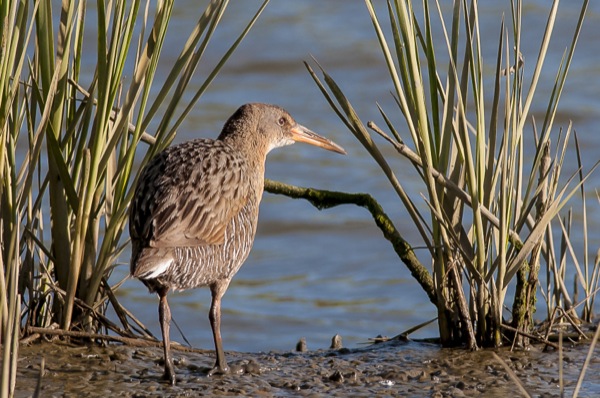


Conflicting conservation goals
Eradicating invasive marsh plant can threaten endangered birds' recovery
9:16 a.m., June 6, 2014--Efforts to eradicate invasive species increasingly occur side by side with programs focused on recovery of endangered ones, leaving resource managers to face the question of what to do when the eradication of an invasive species threatens an endangered species.
In a recent study published in the journal Science, researchers at the University of Delaware and the University of California, Davis, examine that conundrum now taking place in the San Francisco Bay. The California clapper rail — a bird found only in the bay — has come to depend on an invasive salt marsh cordgrass, hybrid Spartina, for nesting habitat. Its native habitat has slowly vanished over the decades, largely due to urban development and invasion by Spartina.
Research Stories
Chronic wounds
Prof. Heck's legacy
Their results showed that, rather than moving as fast as possible with eradication and restoration, the best approach is to slow down the eradication of the invasive species until restoration or natural recovery of the system provides appropriate habitat for the endangered species.
“There are endangered species that we want to protect, which are using the invasive species as a resource,” said co-author Sunny Jardine, who joined UD’s College of Earth, Ocean, and Environment last year as assistant professor of marine policy after earning her doctorate at UC Davis.
The scientists developed a theoretical model of Spartina management, where managers choose how much invasive Spartina to eradicate or how much native Spartina to restore, making sure that the combined coverage of native and invasive Spartina meets a minimum habitat requirement for the clapper rail — and the cost of these efforts satisfies budgetary constraints. The theoretical model was grounded in biological and economic data.
“Just thinking from a single-species standpoint doesn’t work,” said Alan Hastings, co-author and UC Davis environmental science and policy professor. “The whole management system needs to take longer, and you need to have much more flexibility in the timing of budgetary expenditures over a longer time frame.”
While more threatened and endangered species are becoming dependent on invasive species for habitat and food, examples of the study’s specific conflict are rare. The only other known case where the eradication of an invasive species threatened to compromise the recovery of an endangered one is in the southwestern United States, where a program to eradicate tamarisk was canceled in areas where the invasive tree provides nesting habitat for the endangered southwestern willow fly-catcher.
In Delaware, Jardine may explore implications of this research for the management of the non-native hybrid of the marsh grass Phragmites (as opposed to native Phragmites). A European variety of the plant was introduced in North America in the 1950s, disrupting coastal marshes.
“Since invasive Phragmites has been here for a long time, it’s possible that other native species that we are interested in conserving are using it in some way that we don’t know about,” Jardine said.
While native to the East Coast, Spartina alterniflora was introduced to the San Francisco Bay in the mid-1970s by the Army Corps of Engineers as a method to reclaim marshland. It hybridized with native Spartina and invaded roughly 800 acres. Eradication of hybrid Spartina began in 2005, and about 92 percent of it has been removed from the bay.
The cordgrass has also invaded areas of Willapa Bay in Washington state, where efforts to eradicate it are nearly complete, and invasive Spartina has been spotted and removed from Tomales Bay, Point Reyes and Bolinas Lagoon in California.
The study, led by UC Davis postdoctoral fellow Adam Lampert, was funded by the National Science Foundation Dynamics of Coupled Natural and Human Systems Program. Co-authors include UC Davis environmental science and policy professor James Sanchirico, Hastings and Edwin Grosholz.
Adapted with permission from material by Kat Kerlin of UC Davis
Photos by Robert Clark and courtesy of Sunny Jardine









